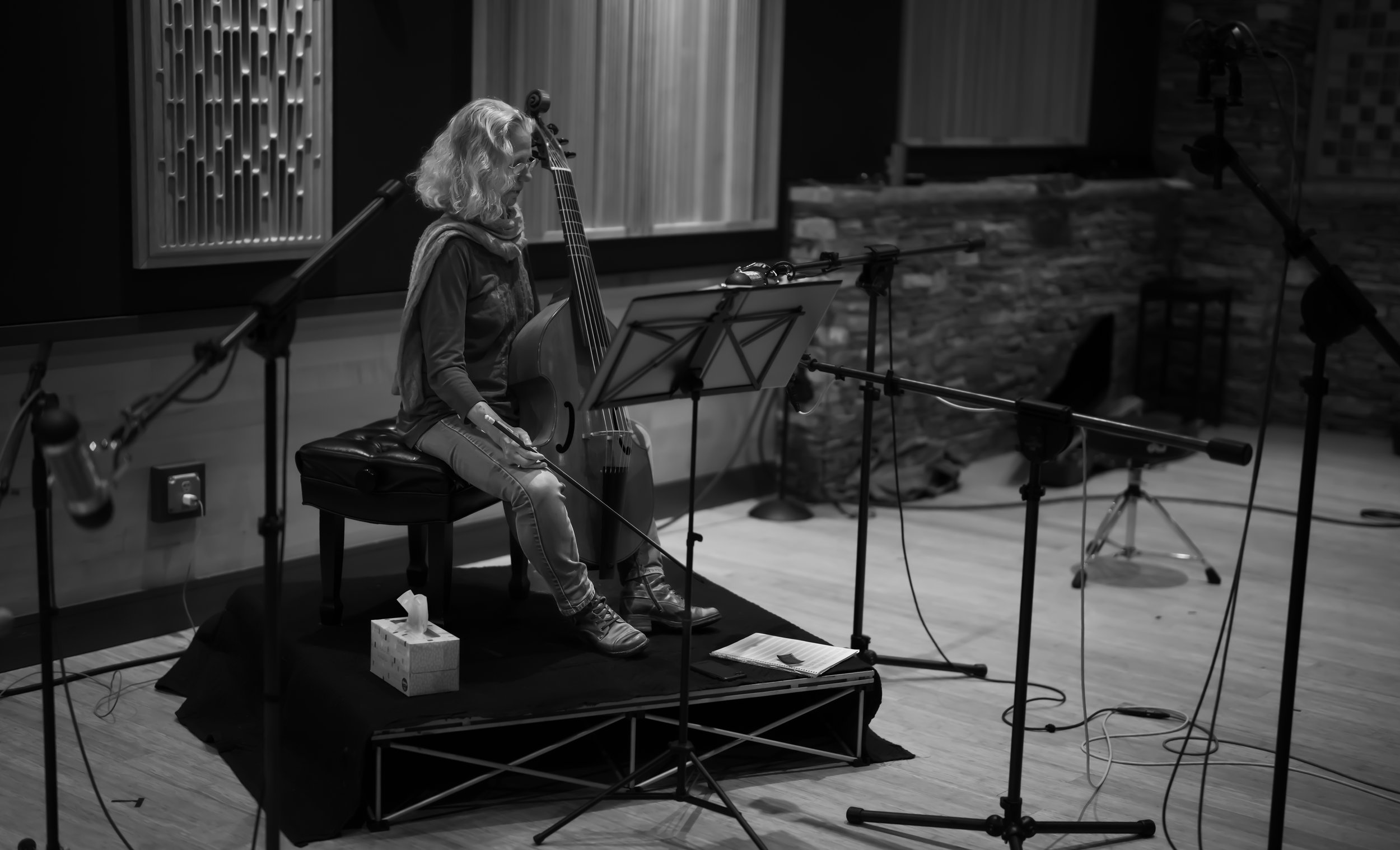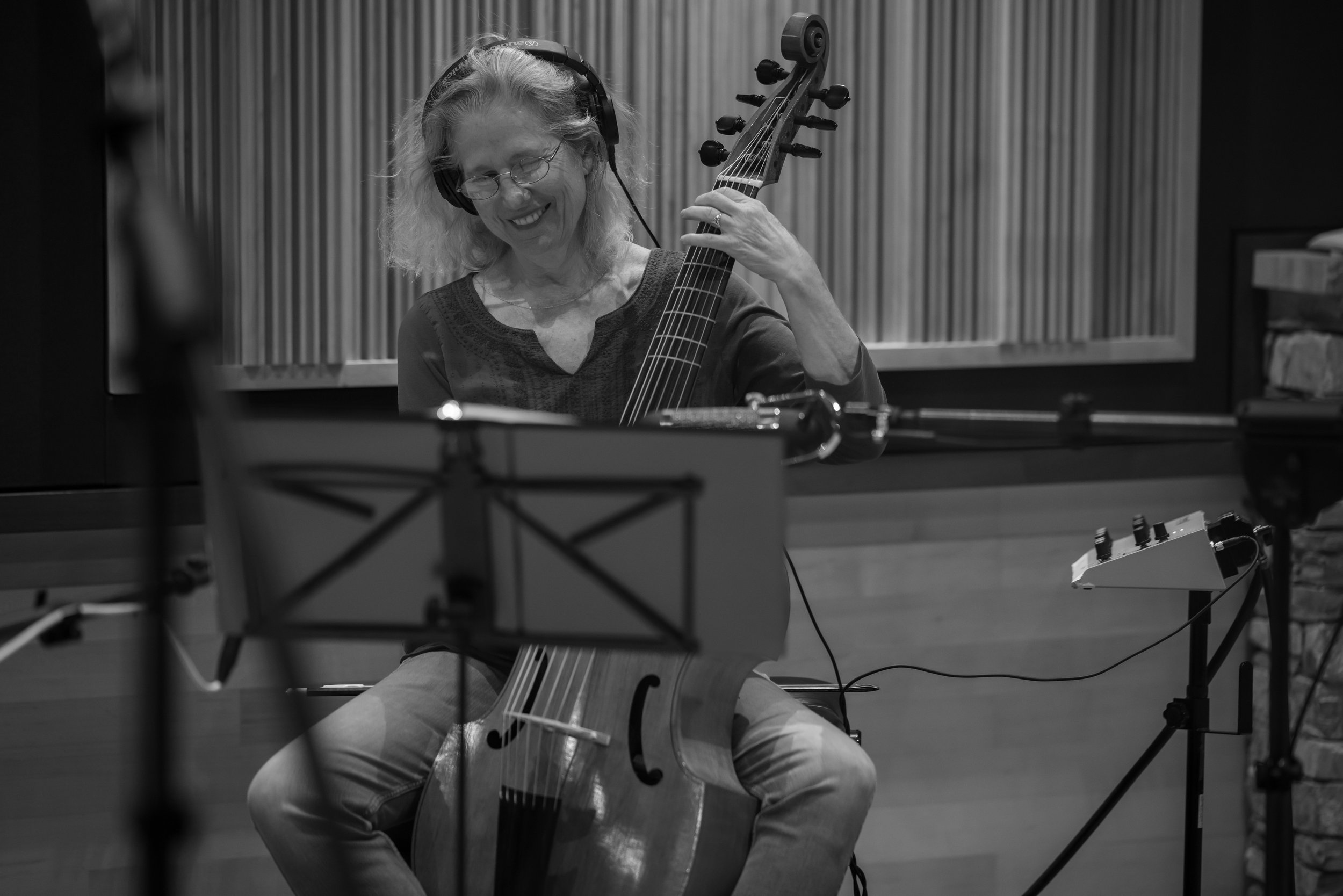
Carolyn Anderson Surrick
Musician, composer, poet, and producer, Carolyn Surrick has been hailed as one of the most prolific and innovative artists in her field. She has performed in concert halls, churches, clubs, listening rooms, hospitals, bars (it was the seventies), on front porches, in libraries, pre-schools, and every other kind of school, on a ranch in Montana, and in the middle of a field in Cora, Wyoming - the cattle were fascinated. Her original compositions are in the film score for Letters from the Big Man and she was an on-screen musician in The Pelican Brief. She can be heard on numerous recordings, some of which she produced, and she has recorded and performed with many, many, extraordinary musicians from the traditional music world and the early music world. When asked recently about why she looked so happy at an Ensemble Galilei Solstice concert, she replied, “I’m with my people, doing what I love.”
Surrick pioneered multi-disciplinary projects starting in 2003 with Ensemble Galilei’s A Universe of Dreams, working with the Hubble Space Telescope Institute. Her institutional collaborators have included NPR, The National Geographic Society, and the Metropolitan Museum of Art. Her beloved partners include the late and brilliant NPR journalists Neal Conan and Anne Garrels, and she has had the great, good fortune of working with actors Lily Knight, Bill Pullman, Adrian LaTourelle, Kimiko Gelman, and Rob Nagle, directors Steve Robman and Casey Stangl, producers Charlie Pilzer, Erica Brenner, Dan Merceruio and executive producer, Lindsey R. Nelson. Her poetry was the inspiration for Between War and Here which premiered in 2018, and was transformative for audiences across this country. She is currently creating a project for Baltimore City Schools which will synthesize her work at Walter Reed and Fort Belvoir with the creative writing projects that she invented for Ensemble Galilei to serve students from third grade through college, senior citizens, and incarcerated teenagers.
Every project, CD, and performance has been meaningful, but the seven years of Fridays that Surrick spent working with wounded warriors and their families holds a special place in her heart, and those experiences expanded her perspective on the role that music can play in affecting change in the world.
She received a B.A in music from U.C.S.C and an M.A. in musicology from George Washington University. She founded Ensemble Galilei in 1990, Trio Galilei in 2008, and has been recording and performing with Ronn McFarlane since 2020. She has toured across 46 states and 4 countries, written four books, built three houses, and has a loom in her basement which has recently been dusted off and is the source of significant and meaningful quiet creativity.



The Viola da Gamba
In January of 1996, The National Gallery brought over an exhibit from the Hague of selected works by Johannes Vermeer, a 17th century Dutch painter. The line for tickets went all the way around the block (and in that part of Washington DC, the blocks are enormous) and it was bitterly cold. My friends and I took turns standing outside, and then warming ourselves in the Smithsonian next door.
I was thirty-six years old, had played the viola da gamba for twenty years, and was not prepared for the sense of beauty that the paintings described. Vermeer loved light. He loved women. And, clearly, he loved the viola da gamba.
Wikipedia says that the viola da gamba was second only to the lute in popularity in Europe for about 250 years. It’s possible, I guess. I know that the instrument came into being in Spain or in Italy sometime in the middle of the 15th century. It has five, six, or seven strings, is tuned in fourths with a third in the middle, is bowed underhand, has movable frets, has a flat back, and by 1750, was on its way to extinction.
How and why it was invented is not as interesting to me as why it disappeared. Simply put, by the late 18th century, the new fashion of going out to hear music – to the opera and to the symphony, was the beginning of the end for the instrument.
In the early 1600’s, composers started moving from counterpoint to harmony – and for those of you not steeped in music theory, the result of that seismic shift was that music which had been built on equal parts playing together, evolved into a soloist with accompaniment, or an orchestra with one section playing the melody and the rest of the symphony playing backup. For audiences it meant going from listening in the moment, to what has been described as expectation-fulfillment.
Opera was invented. Concert halls were built. Music went from being a participation sport, to a spectator sport. Where music fit into culture radically changed. But that’s the subject of another essay…
Everything became big, and the beauty and crazy soulfulness of the viola da gamba was not built for big.
Because of the nature of sound waves, the tuning of the instrument, gut strings, and because we can – when the instrument is in tune, the audience is hearing more than we are playing. Sympathetic vibrations start on open strings, and overtones are roiling around inside the body of the instrument creating a quality of sound that is wildly complex, and almost transparent.
But this can’t be heard with a big orchestra or in a huge concert hall. You aren’t going to hear it when thirty other musicians are playing, too. You will hear it with a harp, a recorder, a fiddle. You will hear it most clearly with a lute. This is intimate sound, perfect for a church, a cloister, a recital hall.
What Vermeer caught in those paintings, was clarity of light, color, and depth, and the unadorned humanity of his subjects. The paintings look simple, but they aren’t, really. It is indeed, what the viola da gamba is meant to do with music. It is supremely capable of reminding us of joy, sorrow, laughter, and rapture, because it possesses an extraordinary range of expression, and that expression is deeply human.
